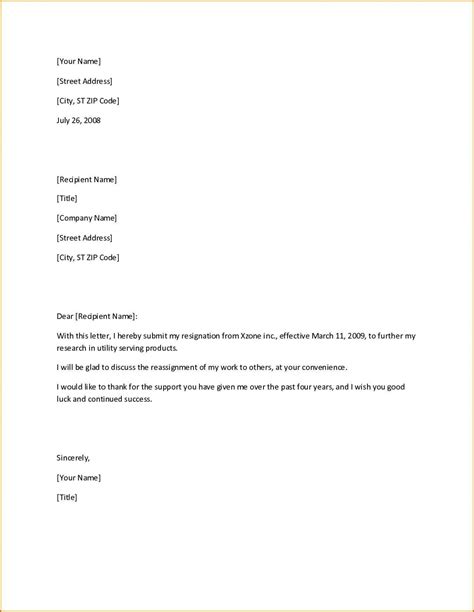Templates For Writing Resignation Letters In English

Are you thinking about leaving your current job? Perhaps you’ve found a better opportunity, or maybe it’s time for a change. Whatever your reason, it’s important to resign professionally and with grace. Writing a resignation letter is a crucial step in that process.
Why Resignation Letters Matter
A resignation letter is your official notice that you are leaving your job. It’s a chance for you to thank your employer for the opportunities you’ve had, express gratitude to your colleagues, and provide a clear timeline for your departure. But even more importantly, a resignation letter is a chance for you to maintain a positive relationship with your employer and leave on good terms.
When to Write a Resignation Letter
You should write a resignation letter when you’ve made the decision to leave your job and have a clear idea of when you’ll be departing. This will give your employer ample time to find a replacement and make any necessary arrangements.
What to Include in a Resignation Letter
A resignation letter should be brief, professional, and to the point. Here are some key elements to include:
- Date of resignation
- Your name and job title
- A clear statement of your intention to resign
- The date of your last day of work
- A brief explanation of your reason for leaving (optional)
- A thank you to your employer and colleagues for the opportunities you’ve had
- A willingness to help with the transition process
- Your contact information
Sample Resignation Letters
Here are some sample resignation letters that you can use as a starting point for your own letter:
How to Write a Resignation Letter
Now that you know what to include in your resignation letter, here are some tips for writing it:
- Be clear and concise. Get straight to the point and avoid any unnecessary details.
- Express gratitude. Take the time to thank your employer and colleagues for the opportunities you’ve had.
- Offer to help. Let your employer know that you’re willing to help with the transition process in any way you can.
- Provide contact information. Make sure to include your email address and phone number so your employer can contact you if needed.
- Proofread carefully. Double check for spelling and grammar errors before sending your letter.
Conclusion
Writing a resignation letter may seem like a daunting task, but it’s an important step in leaving your job professionally and maintaining positive relationships with your employer and colleagues. By following the tips and guidelines outlined in this article, you can write a resignation letter that is clear, concise, and professional.
FAQs
Q: When should I submit my resignation letter?
A: You should submit your resignation letter as soon as you’ve made the decision to leave your job and have a clear date in mind for your departure. This will give your employer ample time to find a replacement and make any necessary arrangements.
Q: Do I need to include a reason for leaving in my resignation letter?
A: It’s optional to include a brief explanation for your departure. If you do choose to include a reason, keep it professional and avoid any negative comments or complaints about your employer or colleagues.
Q: How do I address my resignation letter?
A: Address your resignation letter to your immediate supervisor or manager. If you work in a larger organization, you may also want to cc: your HR representative or department.
